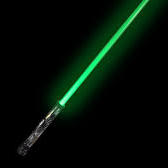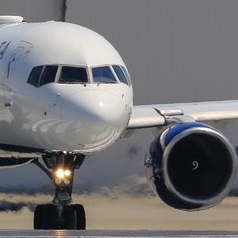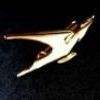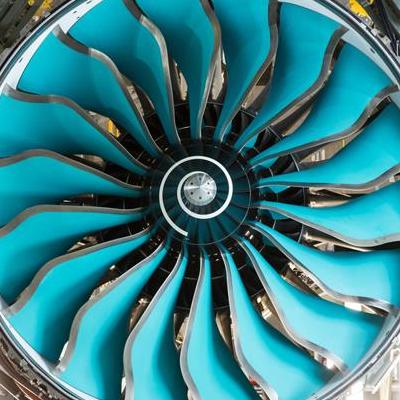Moderators: richierich, ua900, PanAm_DC10, hOMSaR
What makes the engine physically go faster?
The answer is probably pretty obvious, but what exactly "makes" the engine spin faster if I wanted to go from idle to full or 90% thrust for takeoff? What component? Stored energy which is output by the engine itself by something like an alternator?
Either for a jet or for a prop.
Either for a jet or for a prop.
Re: What makes the engine physically go faster?
On a jet engine, the it's the fuel control, also known as the fuel management unit, the fuel flow governor or the hydro-mechanical unit. It's what actually meters the fuel to the fuel nozzles. The command comes from the EEC or a mechanical throttle input.
If you really want to get "basic", it's the increase in fuel flow that makes the engine go faster. More fuel=more heat (energy).
If you really want to get "basic", it's the increase in fuel flow that makes the engine go faster. More fuel=more heat (energy).
Re: What makes the engine physically go faster?
fr8mech wrote:On a jet engine, the it's the fuel control, also known as the fuel management unit, the fuel flow governor or the hydro-mechanical unit. It's what actually meters the fuel to the fuel nozzles. The command comes from the EEC or a mechanical throttle input.
If you really want to get "basic", it's the increase in fuel flow that makes the engine go faster. More fuel=more heat (energy).
Is there an extra output of heat combustion to the fuel? Doesn't richer fuel result in "cooler fuel" since the heat is being distributed among more fuel? Or is there even a such thing as "leaning/enrichment" of the fuel/air mixture on a jet?
-

- Starlionblue
- Posts: 21730
- Joined:
Re: What makes the engine physically go faster?
More fuel means higher temperature, means more energy, means faster spin, means more air sucked in, balancing the mixture.
Ok, it's a bit more complicated given modern FADEC.
Ok, it's a bit more complicated given modern FADEC.
Re: What makes the engine physically go faster?
I'm not a powerplant engineer, so I won't even try to get into the "weeds", but as you add fuel, the fuel nozzles maintain the correct fuel/air mixture. As more fuel flows, more air is introduced to combine with the fuel, maintaining the "mixture". A jet engine has an over-abundance of air...we actually have to choke it down and bleed it off at lower power settings.
Again, this is an over-simplification.
Again, this is an over-simplification.
Re: What makes the engine physically go faster?
You know, I'm going to clarify my answer a bit. The nozzles don't "introduce" more air, they maintain the appropriate spray pattern so the fuel efficiently mixes with the air. The increase in air comes from, as Starlionblue wrote, the faster spin from the increased energy released.
Re: What makes the engine physically go faster?
As said above you just add more fuel to the fire. It will run richer for a moment.. but this is not a piston engine. I don't think it gets cooler when it runs richer, it will take in more air when it needs it.
On a piston engine you control the power with the airflow. The more airflow, the more fuel... combined, more power. On a jet engine it's the other way around. You inject more fuel, get a "bigger bang" in the combustion chamber, the turbine spins faster which in turn drives the compressor, sucking in more air.
But you can't go from idle to max power instantly. As the airflow needs to catch up, you'd have to increase the fuel flow gradually (that's a reason why flight idle is a higher rpm than ground idle... because the engine needs time to spool up, and that time from "idle" to max power is limited by regulations.). Otherwise you'd get a compressor stall. That's where on modern jet engines the FADEC comes in. With the thrust levers you tell the engine control unit what power setting you would like to have and FADEC does the rest.
There's actually an envelope of maximum and minimum fuel flow that the ECU always keeps the engine in:

On a piston engine you control the power with the airflow. The more airflow, the more fuel... combined, more power. On a jet engine it's the other way around. You inject more fuel, get a "bigger bang" in the combustion chamber, the turbine spins faster which in turn drives the compressor, sucking in more air.
But you can't go from idle to max power instantly. As the airflow needs to catch up, you'd have to increase the fuel flow gradually (that's a reason why flight idle is a higher rpm than ground idle... because the engine needs time to spool up, and that time from "idle" to max power is limited by regulations.). Otherwise you'd get a compressor stall. That's where on modern jet engines the FADEC comes in. With the thrust levers you tell the engine control unit what power setting you would like to have and FADEC does the rest.
There's actually an envelope of maximum and minimum fuel flow that the ECU always keeps the engine in:

-

- Apprentice
- Posts: 778
- Joined:
Re: What makes the engine physically go faster?
Hi:
The only difference is time. A turbine accelerates slowly, to keep balnce between air-gas.
As before me was explained:
Need more power- open the throtle.
Get more Fuel that combines with income air and with extra air that was diverting by differents valves at iddle.
This valves and vanes, take a more “friendly” position during acceleration and allows more air to go into combuster chamber.
Fuel + Air = more gas impact with High Pressure Turbine, which function is convert Gas’ Energy in Engine’ Energy, making rotors turn quickly, compress more external air and, every thing from the begining....
Rgds
The only difference is time. A turbine accelerates slowly, to keep balnce between air-gas.
As before me was explained:
Need more power- open the throtle.
Get more Fuel that combines with income air and with extra air that was diverting by differents valves at iddle.
This valves and vanes, take a more “friendly” position during acceleration and allows more air to go into combuster chamber.
Fuel + Air = more gas impact with High Pressure Turbine, which function is convert Gas’ Energy in Engine’ Energy, making rotors turn quickly, compress more external air and, every thing from the begining....
Rgds
Re: What makes the engine physically go faster?
The variable inlet guide vanes will also be scheduled to allow more air flow.
Re: What makes the engine physically go faster?
Most jet engines run a fair bit lean of stochiometric combustion, so dumping more fuel in means more energy release, hence the spool-up.
-

-
lightsaber
Moderator
- Posts: 24641
- Joined:
Re: What makes the engine physically go faster?
As noted, aircraft engines run very lean. The LEAP-1x engines all have combustors that always burn lean to keep the temperature cooler to minimize NOx production.
There must be a fuel schedule to keep the engine from approaching stoichiometric or say goodbye to the high turbine. There is a reason engines takes quite a few seconds to spool up. You can only increase the fuel at a metered rate to keep the engine durable.
Going from flight idle to full throttle does many takeoffs of damage to the engine to accelerate the availability of thrust. At takeoff, the pilot may lock the breaks giving the engine the time it needs to build thrust on takeoffs that approach the field limits.
There must be a fuel schedule to keep the engine from approaching stoichiometric or say goodbye to the high turbine. There is a reason engines takes quite a few seconds to spool up. You can only increase the fuel at a metered rate to keep the engine durable.
Going from flight idle to full throttle does many takeoffs of damage to the engine to accelerate the availability of thrust. At takeoff, the pilot may lock the breaks giving the engine the time it needs to build thrust on takeoffs that approach the field limits.
-

- Florianopolis
- Posts: 382
- Joined:
Re: What makes the engine physically go faster?
lightsaber wrote:Going from flight idle to full throttle does many takeoffs of damage to the engine to accelerate the availability of thrust.
Is a go-around worse for the engine than a takeoff?
-

- Starlionblue
- Posts: 21730
- Joined:
Re: What makes the engine physically go faster?
Florianopolis wrote:lightsaber wrote:Going from flight idle to full throttle does many takeoffs of damage to the engine to accelerate the availability of thrust.
Is a go-around worse for the engine than a takeoff?
If we assume that the bigger the thrust range you traverse to get to full thrust, the more wear on the engine, then no. Flight idle is higher than ground idle, and besides for a late go-around you'll be way over flight idle.
Re: What makes the engine physically go faster?
Based on all your responses, my understanding is that more injected fuel results in a higher energy output, which in turn drives the turbine and fan to go faster, intaking more air as a result. As far as mixture goes, I'm aware of flame out; too lean a mixture that the "flames" are extinguished (wait what exactly is producing the flame?), alternatively, too rich a mixture and combustion is hindered. I believe that's why the mixture must be leaned at higher altitudes since the air intake is much lower due to the lower air density.
I also was wondering about how on go-around it's accepted to increase to full throttle immediately.
However, is this different with a propeller? I understand leaning the mixture results in a higher EGT which indicates the exhaust gases are coming out hotter (and faster, presumably). In this case why is more fuel actually less power?
I also was wondering about how on go-around it's accepted to increase to full throttle immediately.
However, is this different with a propeller? I understand leaning the mixture results in a higher EGT which indicates the exhaust gases are coming out hotter (and faster, presumably). In this case why is more fuel actually less power?
-

- Starlionblue
- Posts: 21730
- Joined:
Re: What makes the engine physically go faster?
- Jet engine flames are continuous once the engine is running. This is in contrast to piston engines which have intermittent ignition. During engine start, spark igniters create, you guessed it, sparks which light the mixture. The igniters can be turned on manually for flight in heavy rain to decrease the risk of flameout. This is known as "continuous ignition."
- With a modern engine, in a go around you can go move the thrust levers to the full thrust position immediately. The thrust levers (or autothrust) command FADEC to deliver a thrust level, and FADEC controls the engine itself so that the commanded thrust level is actually delivered. You're not going to drown the engine in fuel if you go from idle to TOGA on the thrust levers in an instant because you're not directly controlling fuel flow. FADEC ensures thrust increases as fast as possible but without combustion issues. (Technically speaking, jet engines don't have throttles. Both Boeing and Airbus call the controls "thrust levers".)
Turboprops work rather similarly.
- With a modern engine, in a go around you can go move the thrust levers to the full thrust position immediately. The thrust levers (or autothrust) command FADEC to deliver a thrust level, and FADEC controls the engine itself so that the commanded thrust level is actually delivered. You're not going to drown the engine in fuel if you go from idle to TOGA on the thrust levers in an instant because you're not directly controlling fuel flow. FADEC ensures thrust increases as fast as possible but without combustion issues. (Technically speaking, jet engines don't have throttles. Both Boeing and Airbus call the controls "thrust levers".)
Turboprops work rather similarly.
Last edited by Starlionblue on Sun Jun 24, 2018 7:39 am, edited 1 time in total.
Re: What makes the engine physically go faster?
CarlosSi wrote:(wait what exactly is producing the flame?)
An ignitor plug provides the initial spark to light the fire. Ignition is cut-off at the same time the starter cuts out. The flame is self-sustaining.
CarlosSi wrote:I also was wondering about how on go-around it's accepted to increase to full thrust immediately.
The heart of a modern engine is the FADEC (Full-Authority Engine Control), the EEC (Electronic Engine Control) or the ECU (Electronic Control Unit). Different manufacturers call them different things, and they may have some different functions/features, but for the purposes of this discussion, the terms are synonymous. This is the component that schedules the fuel and tells the other components (fuel control, stator vane actuators, engine vane controls, variable bleed valves, turbine clearance valves, etc.) what to do. Basically, the thrust lever is advanced, the EEC receives the command, interprets the command along with other variables, external and internal to the engine, and issues its own commands to the various components based on the schedule programmed into the EEC.
On an older engine, the majority of the computations are performed in the fuel control. A hydro-mechanical-electrical computer. Depending on the engine, you may also have a vane controller and a bleed valve controller. These receive their servo fuel from the fuel control.
Engines with electronic control are very quick to respond to thrust lever commands. For instance, I seem to recall the acceleration standard for a PW2000, is something like 4 seconds for flight-idle to take-off power. I'll see if I can find that reference.
The older engines were a bit slower. I want to say the JT9 was something in the 10 sec range, on the ground.
Edit: the acceleration limit on the PW2000 is 5.8 seconds max when the throttle is advanced in less than one second from the idle stop to take-off.
Last edited by fr8mech on Sun Jun 24, 2018 7:58 am, edited 2 times in total.
-

- Starlionblue
- Posts: 21730
- Joined:
Re: What makes the engine physically go faster?
As fr8mech says, modern engines are very fast. Even the past few decades seem to have seen improvement. The Trent XWB-84 on the 350 is up to take-off thrust even before you've had time to call the modes. The Trent 772B on the 330, a rather smaller and less powerful engine, takes several seconds longer. (The latter uses an acceleration mode called MEASTO, Modified Engine Acceleration Schedule for Take-Off, which decreases the risk of surges.)
Re: What makes the engine physically go faster?
CarlosSi wrote:fr8mech wrote:Doesn't richer fuel result in "cooler fuel" since the heat is being distributed among more fuel?
For a spark ignition piston engine, a richer mixture does cool things down, but this is due to the phase change (liquid to vapour) of the excess fuel taking heat from the combustion process.
Regards, JetMech




